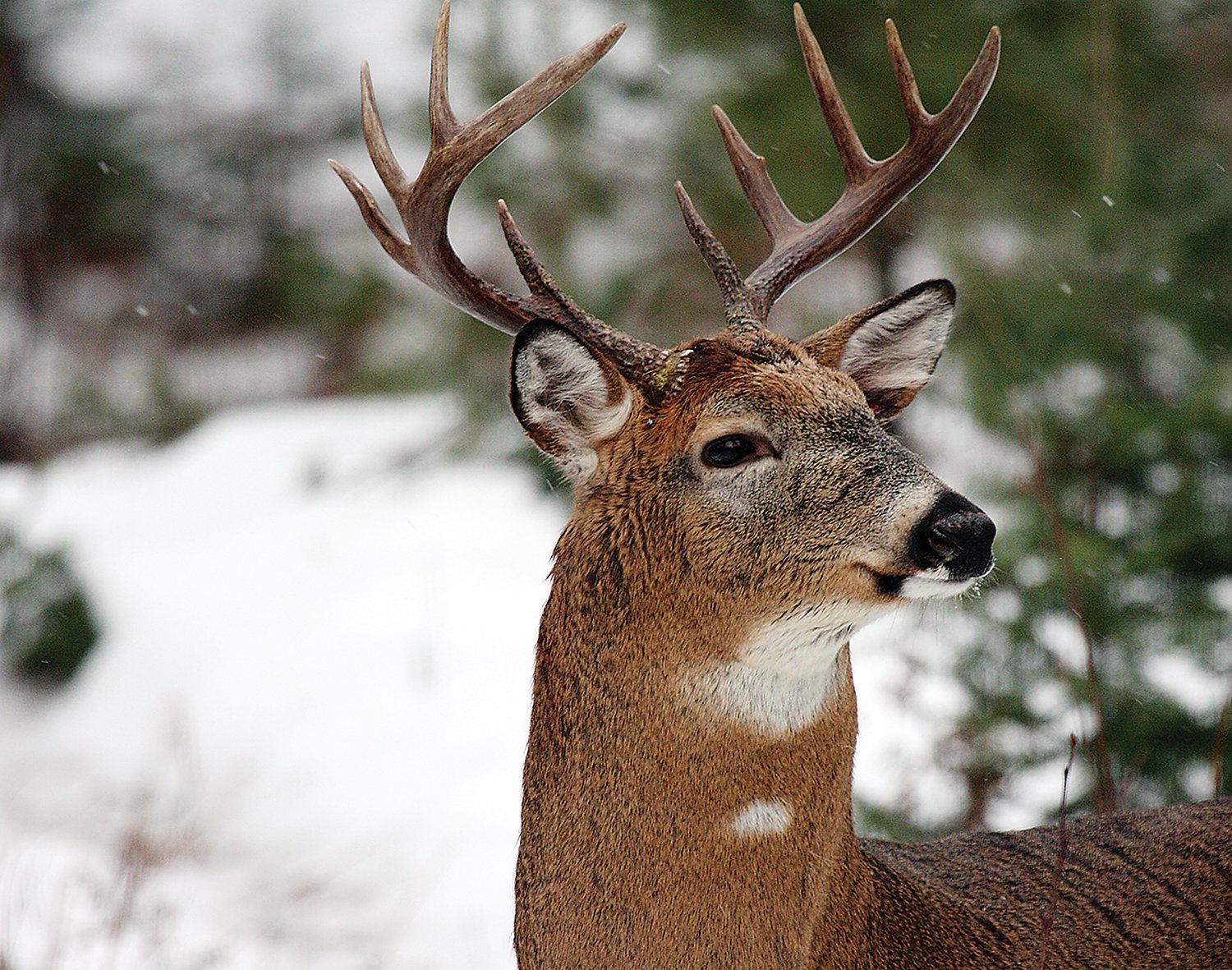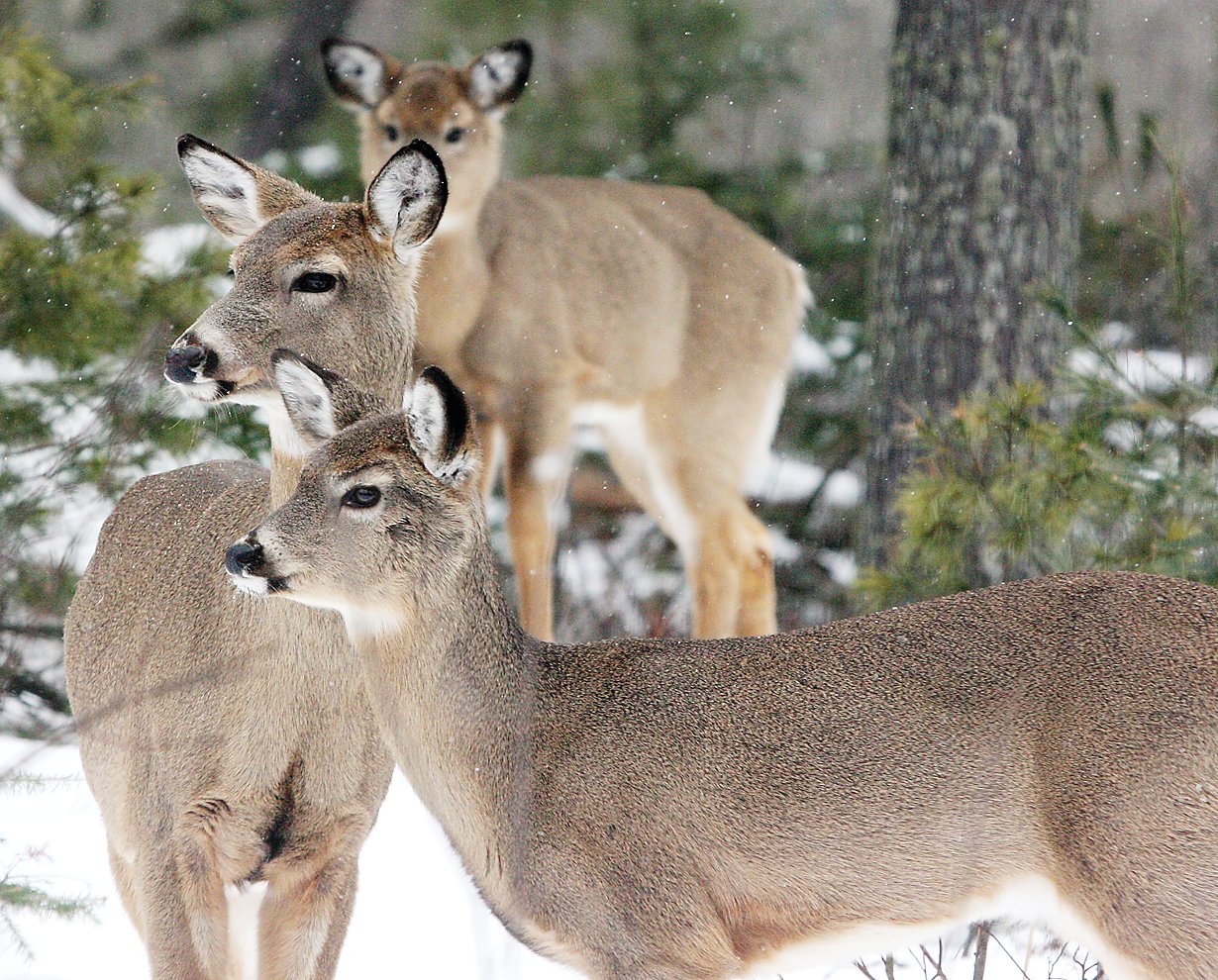Support the Timberjay by making a donation.
Herd remains in recovery
Back-to-back severe winters will present a challenge to hunters this season
REGIONAL— Hunters across much of the North Country will find a depleted deer herd in many areas this year when they head to their stands Saturday for the opening of Minnesota’s regular …
This item is available in full to subscribers.
Attention subscribers
To continue reading, you will need to either log in to your subscriber account, or purchase a new subscription.
If you are a current print subscriber, you can set up a free website account and connect your subscription to it by clicking here.
If you are a digital subscriber with an active, online-only subscription then you already have an account here. Just reset your password if you've not yet logged in to your account on this new site.
Otherwise, click here to view your options for subscribing.
Please log in to continue |
Herd remains in recovery
Back-to-back severe winters will present a challenge to hunters this season
REGIONAL— Hunters across much of the North Country will find a depleted deer herd in many areas this year when they head to their stands Saturday for the opening of Minnesota’s regular firearms deer season. A series of tough winters have increased winter mortality across the region and reduced the remaining herd’s reproductive potential for at least the past two years, according to DNR wildlife managers.
That’s why hunters in those areas will be limited to bucks only for the most part. Most other permit areas in the North Country allow for some antlerless harvest through the lottery system.
“Generally, hunters will not see many young deer, especially on heavily forested public land,” said Tom Rusch, Tower area wildlife manager for the Department of Natural Resources. “Spikes and forkhorn bucks, last year’s fawns, will be much less common in the woods and on the game pole. These are 18-month old bucks that were part of the poor 2019 fawn crop.”
While the overall picture is discouraging, Rusch notes that hunters can improve their odds significantly through advanced scouting. “Deer populations are highly variable across the area,” he said. “Scouting in advance to find deer activity will pay dividends. Experience has shown that mobile stand hunters will find the most success.”
Hunters should find the most deer in Permit Areas 176, 177, and 178, located on the western and southern portions of the DNR’s Tower work area. “Fawn production is always greater in 176, 177 and 178 because of the availability of agricultural fields and earlier spring green-up following tough winters,” said Rusch.
Lucky hunters in those areas, who received one of the limited number of antlerless permits through the lottery, will have better odds than most since they won’t be limited to taking an adult buck. But most hunters in the region will be limited to bucks-only, including hunters in PAs 118, 119, 130 and 132, where the deer population has suffered the most from recent tough winters. These areas contain miles of unbroken forest in most cases, providing mostly marginal habitat for whitetail deer. And some areas, such as PA 119, have seen critical winter cover reduced due to intensive logging over the past 20 years.
Only PA 117, located in the heart of the Boundary Waters, will allow hunters to shoot either sex this year with a standard license. But that’s only because the area is managed almost exclusively for moose, and few deer hunters opt to hunt there due to the extremely limited population of whitetails.
It isn’t all bad news for hunters. Saturday’s opener should coincide with the peak of the chase phase of the whitetail rut, which means bucks should be active and moving throughout legal shooting hours as they seek out receptive does. Hunters can legally shoot from a half hour before sunrise to a half hour after sunset each day during the 16-day season. The sun will rise at 7:05 a.m. and will set at 4:42 p.m. on Saturday.
The rut is expected to peak around the second weekend of the season, when the rut transitions into the reproductive phase and deer movements generally decline. That means opening weekend should provide the best chance for success for hunters. The key, as usual, is putting time in on the stand if you want to improve your odds of success. Hunters rarely bag a buck while sitting back in camp.
Time of day is also important, particularly with the waning moon at last quarter. That’s plenty of moon to keep deer active in the overnight hours, which means they often take a breather in the early morning hours, before becoming active again around midday. So rather than heading into camp at noon, consider packing your lunch and remaining in your stand.
Spending time in the stand should be easier than usual on opener. Highs both Saturday and Sunday are forecast to reach the 50s, much warmer than most recent openers. Sunday is forecast to bring showers. Much colder weather is forecast to arrive Monday.









